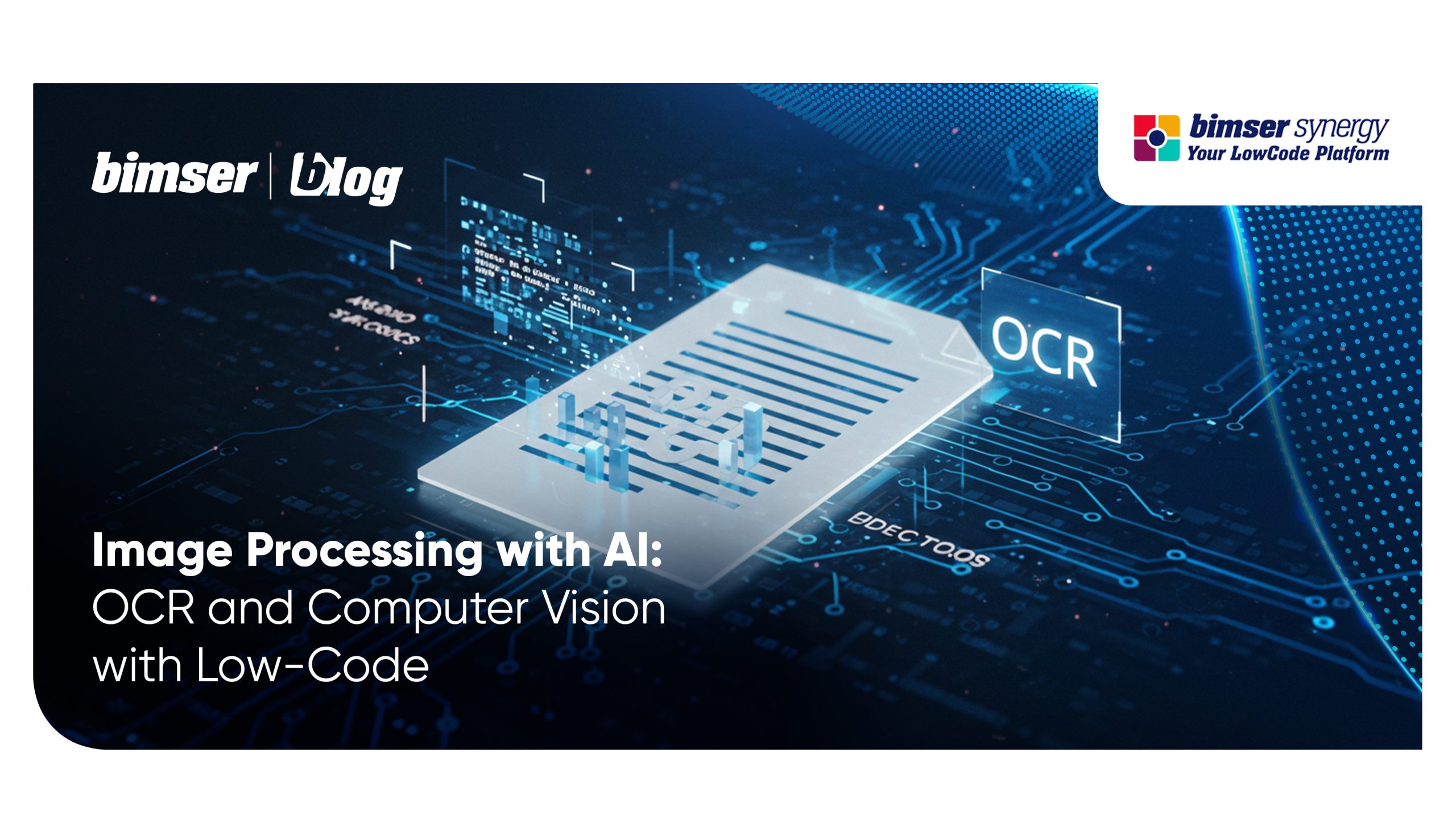Image Processing with AI: OCR and Computer Vision with Low-Code
AI technology in image processing is revolutionizing digital transformation. AI-supported solutions are being utilized in various areas, from computer vision systems to OCR technology. These solutions, which automate workflows and improve decision-making processes, are becoming more accessible through integration into low-code platforms.
What Is AI Image Processing?
AI image processing is a technology that uses artificial intelligence techniques to analyze and improve visual data. It can improve the image quality of visuals as well as perform object and face recognition. It can also focus on complex tasks such as predicting outcomes from visual data.
AI-based image processing utilizes machine learning and deep learning algorithms. AI analyzes visual data features and extracts meaningful insights.
OCR Technology with AI
Optical Character Recognition (OCR) is a process that uses automatic data extraction to convert a text image into a machine-readable format. With OCR, you can quickly convert an image into a text document. This technology enables document digitization by converting hardcopy or handwritten text into digital formats. This accelerates data processing and simplifies document management.
OCR with AI increases accuracy and adaptability by using machine learning models. It reduces the error margin in text recognition by providing high accuracy rates. It creates advantages for businesses, such as process automation and productivity increase by extracting text from documents like invoices and contracts.
AI-based services such as Google Vision API, AWS Textract, and Azure OCR streamline document digitization. These systems can be easily integrated into low-code platforms. This automates document scanning and data processing and eliminates the need for coding.
Computer Vision in Action
Computer vision is a field of artificial intelligence that generates meaningful output from digital inputs and makes recommendations when it detects a problem. It’s critical in automating processes that require image recognition, object detection, and tracking.
Artificial intelligence enables computers to think and act. However, when it comes to interpreting visual data, computer vision plays a crucial role as a comprehensive process of observation and understanding. Machine vision, a key part of computer vision, trains machines to perceive and recognize objects. It aims to accomplish this quickly with data and algorithms.
Computer vision supported by artificial intelligence can play a role in many fields. For instance, AI-supported product recognition and visual search features can be used in the retail sector. Facial recognition features can be used for advanced security solutions. According to the AI in Computer Vision Market Valuation analysis by Verified Market Research (August 2024), the AI-powered computer vision market is expected to exceed $30.54 billion in 2024. This value is projected to reach approximately $309.75 billion by 2031.
Low-code platforms enable object recognition and image analysis using computer vision models such as YOLO (You Only Look Once), OpenCV, and TensorFlow Object Detection with API integrations. For instance, applications like anomaly detection for the quality control process in a production line, license plate reading with security cameras, or face recognition can be easily managed through low-code platforms.
Low-Code Platforms and AI Integration
Low-code platforms facilitate AI integration by eliminating the need to code. This way, businesses can use AI-powered applications faster and at a lower cost.
Minimizing the need for technical knowledge, low-code platforms make it possible to seamlessly deploy AI models. User-friendly features make it easy for companies to implement and manage AI-based solutions. Drag-and-drop interfaces, visual modeling tools, and pre-built integration modules enable advanced AI models. This increases operational productivity and accelerates the digital transformation process.
Low-code platforms enable integrating OCR and Computer Vision models via REST API, webhook, or AI-powered off-the-shelf modules. This makes operations such as document processing, security control, and industrial automation fast and scalable.
Benefits and Future Outlook
The integration of AI into image processing offers many advantages:
- Improving Image Quality: It produces vibrant images by increasing their resolution or repairing damage. This is especially important in historical documents and medical imaging.
- Increased Productivity: Automating tasks related to image recognition reduces manual labor and increases operational efficiency.
- Low Error Rate: Artificial intelligence minimizes human errors in image recognition, text extraction, and document processing.
- Advanced Recognition: AI recognizes faces, brands, and specific products, allowing businesses to learn about consumer behavior and increase security measures.
- Scalability: Businesses can quickly adapt AI-powered image processing solutions to new conditions to process large volumes of data.
Besides the advantages it provides today, what are the future trends in artificial intelligence image processing?
- Real-Time Image Processing: Augmented reality (AR) and virtual reality (VR) use AI to provide real-time analysis of visual data and make virtual experiences more realistic.
- Optimized Performance and Enhanced Privacy: Real-time image analysis can be performed on edge computing devices such as smartphones and IoT sensors. This technology brings processing closer to the data source, reducing latency, and increasing privacy.
- Quantum Image Processing: Quantum image representation (QIR) techniques can advance challenging image analysis applications, such as security and high-dimensional data processing.
- Advanced Image Processing Models: Today’s models trained with large data sets are being replaced by self-learning systems that can be trained with less data.
With the Bimser Synergy Low-Code Platform, digitally transform your company with a fast, low-cost, and practical method. Using Synergy low-code platform, you can integrate advanced AI solutions to your application, like QCR and Computer Vision, without the need for software development knowledge. You can perform complicated processes like visual data analysis, document digitization, and quality control within minutes with Synergy’s ready-made integrations and drag-and-drop interface. If you are looking for a transformation partner for your AI-powered visual processing, request a demo today and streamline your business operations with Synergy!







